Home

Frontispiece of Das brandenburgische Koch-Buch, oder, Die wohl-unterwiesene Köchin… by Maria Sophia Schellhammer, 1692
The early modern home was inhabited and visited by a flexible collective. Privacy was afforded by certain activities and spatial elements like staircases and mobile furnishings, such as curtains. Combining architectural history with material traces and sources that point to ways of inhabiting, Home examines how privacy was enabled and experienced in the early modern period
In the early modern period, the home was a place of manifold activities engaged in by many different people, both those living there and external co-producers. Certain types of spaces such as the cabinet and study became increasingly established to carve out spaces for more stringent control of co-presence. Niches, staircases, and windows are examples of sites where different degrees of privacy could be enabled and created. Mobile elements such as furniture and textiles could be arranged to create secrecy and shelter.
The early modern home provides a comprehensive view into early modern society. In the Lutheran worldview the home was structured in analogy to the state, with the head of household as an integral figure for ensuring the moral integrity of the household. The household itself was a flexible conglomerate that could grow to include extended family members, apprentices and help. Most labour was directly connected to a home. Workshops and shops were part of the home, farming activities spilled into the home, even university teaching partially took place in (professors’) homes. Before notions of domesticity came to expel a large part of the activities and people pertaining to daily life, the home was a busy, bustling site that gave insight into the relations and activities that shaped people’s worlds.
Profile articles
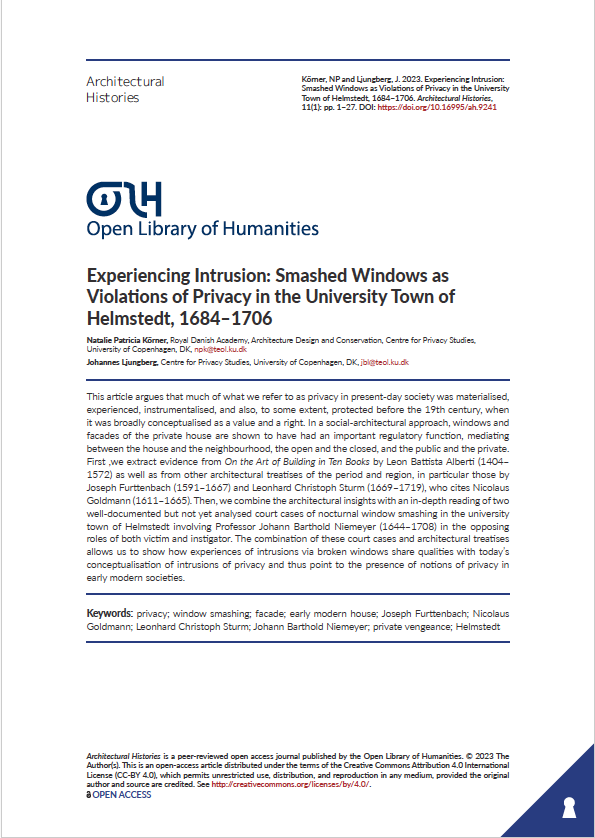 |
Natalie P. Körner & Johannes Ljungberg, "Experiencing Intrusion", Architectural Histories 2023 |
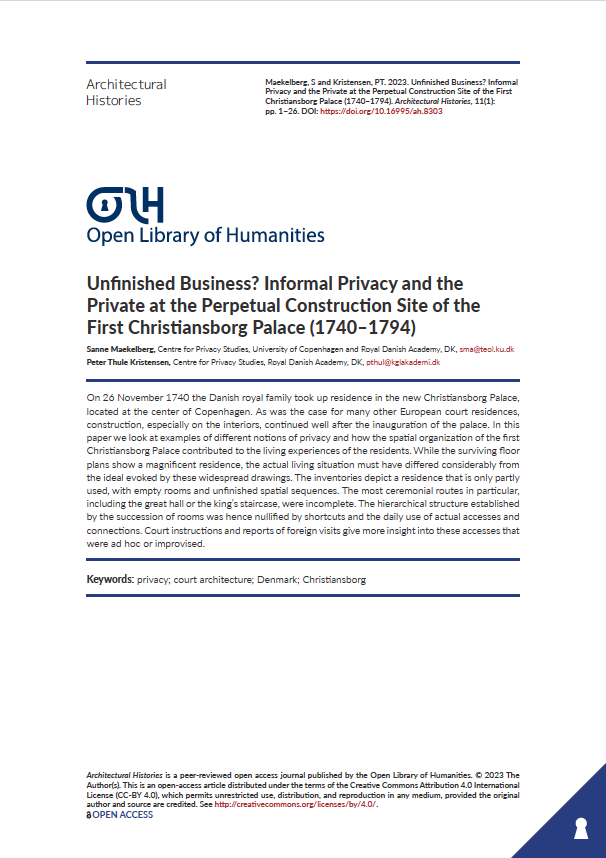 |
Sanne Maekelberg & Peter Thule Kristensen, “Unfinished Business? Informal Privacy and the Private at the Perpetual Construction Site of the First Christiansborg (1740–1794)”, Architectural Histories 2023. |
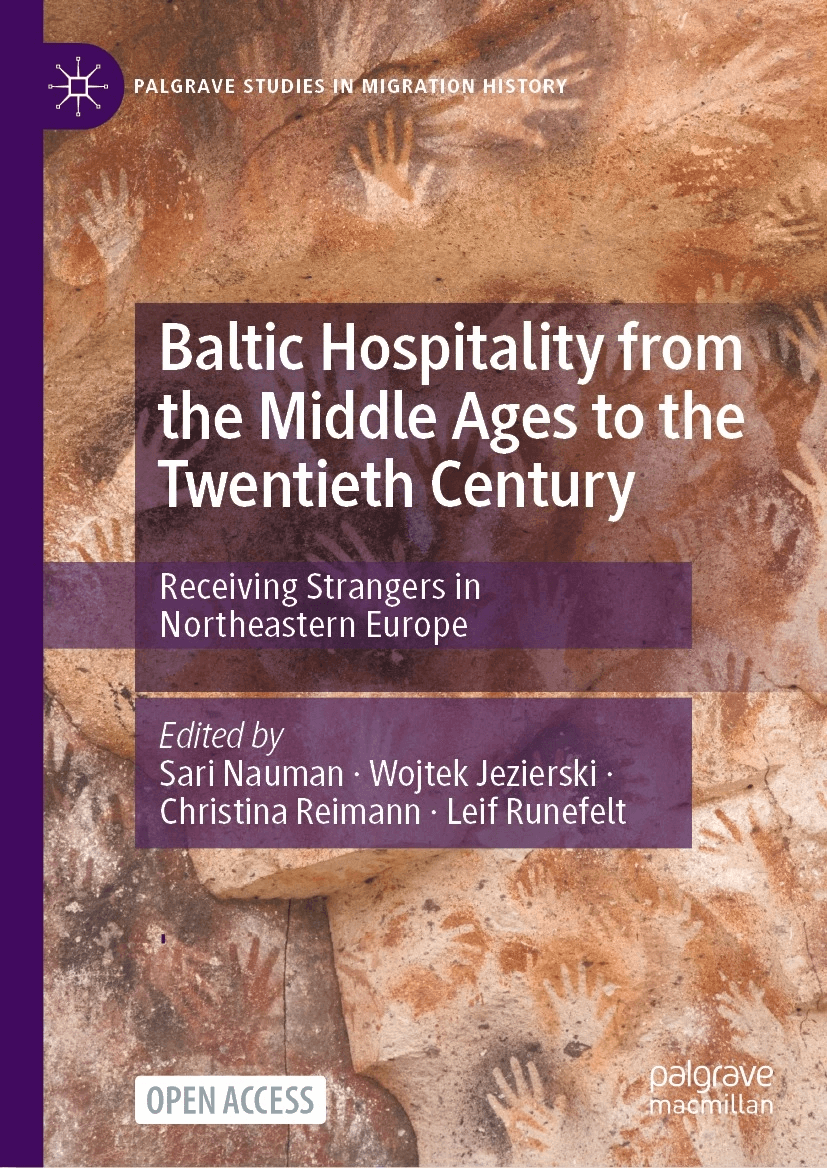 |
Sari Nauman, “Conditional Hospitality towards Internal Refugees: Sweden during the Great Northern War, 1700–1721”, in Baltic Hospitality from the Middle Ages to the Twentieth Century: Receiving Strangers in Northeastern Europe, ed. by Sari Nauman, Wojtek Jezierski, Christina Reimann & Leif Runefelt, Palgrave Macmillan 2022, 221–46. https://link.springer.com/chapter/10.1007/978-3-030-98527-1_9 |
Michaël Green, Lars Cyril Nørgaard & Mette Birkedal Bruun, “En privé & en public: The Epistolary Preparation of the Dutch Stadtholders”, Journal of Early Modern History, 24:3 (2020): 253–79.
Michaël Green, “Spaces of Privacy in Dutch Early Modern Egodocuments”, Tijdschrijft voor Sociale en Economische Geschiedenis/Low Countries Journal of Social and Economic History, 18:3 (2021): 17–40.
Sanne Maekelberg & Peter Thule Kristensen, “Unfinished Business? Informal Privacy and the Private at the Perpetual Construction Site of the First Christiansborg (1740–1794)”, Architectural Histories 2023.
Paolo Astorri & Lars Cyril Nørgaard, ”A little Republic. The jurisdiction private according to Henning Arnisaeus (1570–1636)”, in Reformation and Everyday Life, ed. by Bo Kristian Holm & Nina Javette Koefoed, Vandenhoeck & Rupprecht 2024: 195-219.
Events
Conference: Privacy Matters. How Interiors make and break our Cities, at The Royal Danish Academy, April 20-21, 2023.
Workshop: Privacy and Space – Theory and Practice, at Centre for Privacy Studies, June 8-9, 2023.
Stay home – new perspectives on the home conference at The Royal Danish Academy, November 10-11, 2022.
Private Life in the English Country House: An Interdisciplinary Workshop, at the University of Copenhagen, November 24, 2022.
Affiliated scholars
|
Asta Mønsted specializes in Arctic Archaeology, where her main interests are intangible cultural heritage, Inuit architecture, and Inuit oral history. She examines privacy in different Greenlandic home typologies. |
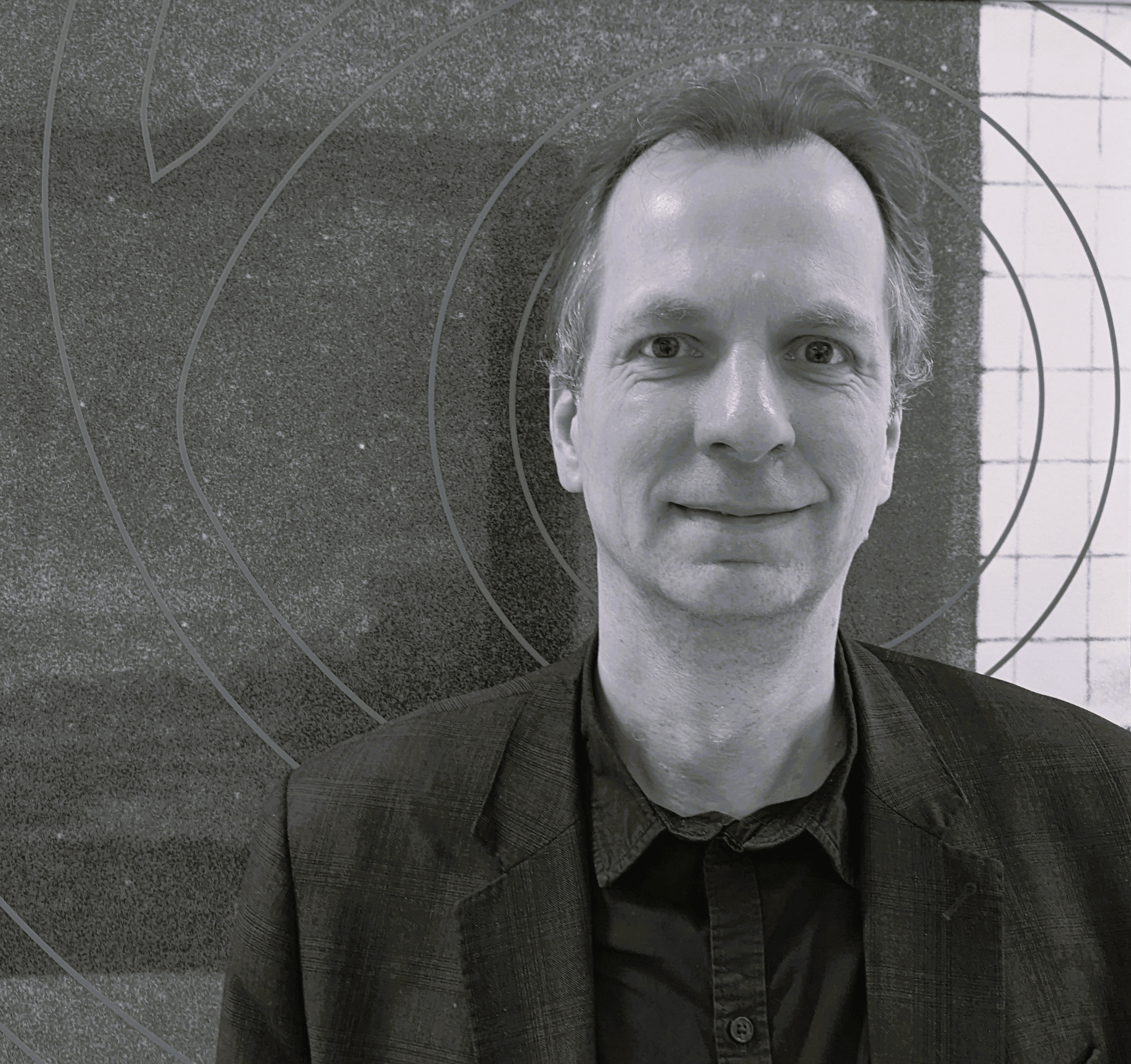
Historian Thomas Lyngby is working on a book about the manor house Ledreborg, which reflects the most exquisite Danish building, interior and garden art of the mid-18th century. The book will cover how the manor was used in everyday life and on festive occasions, including how public and private spheres could be mixed and separated. |
|
|
Partner projects
The Center for Interior Studies is situated at the Institute of Architecture and Design at the Royal Danish Academy (Det Kongelige Akademi - Arkitektur, Design, Konservering). The group of ca ten researchers focuses explores the interior as a hybrid and multifaceted phenomenon, which in addition to its physical, spatial and design related aspects, is also shaped by and shapes social, cultural, aesthetic, political, economic, religious, virtual etc aspects.
Presentation of theme leader, Natalie Köerner
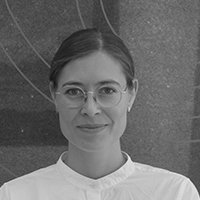
| I am an architectural historian focusing on the connection between privacy and productivity in the early modern home. I am also affiliated with the Royal Danish Academy (Det Kongelige Akademi - Arkitektur, Design, Konservering), specifically the Institute for Architecture and Design. My work bridges history and the present day. |

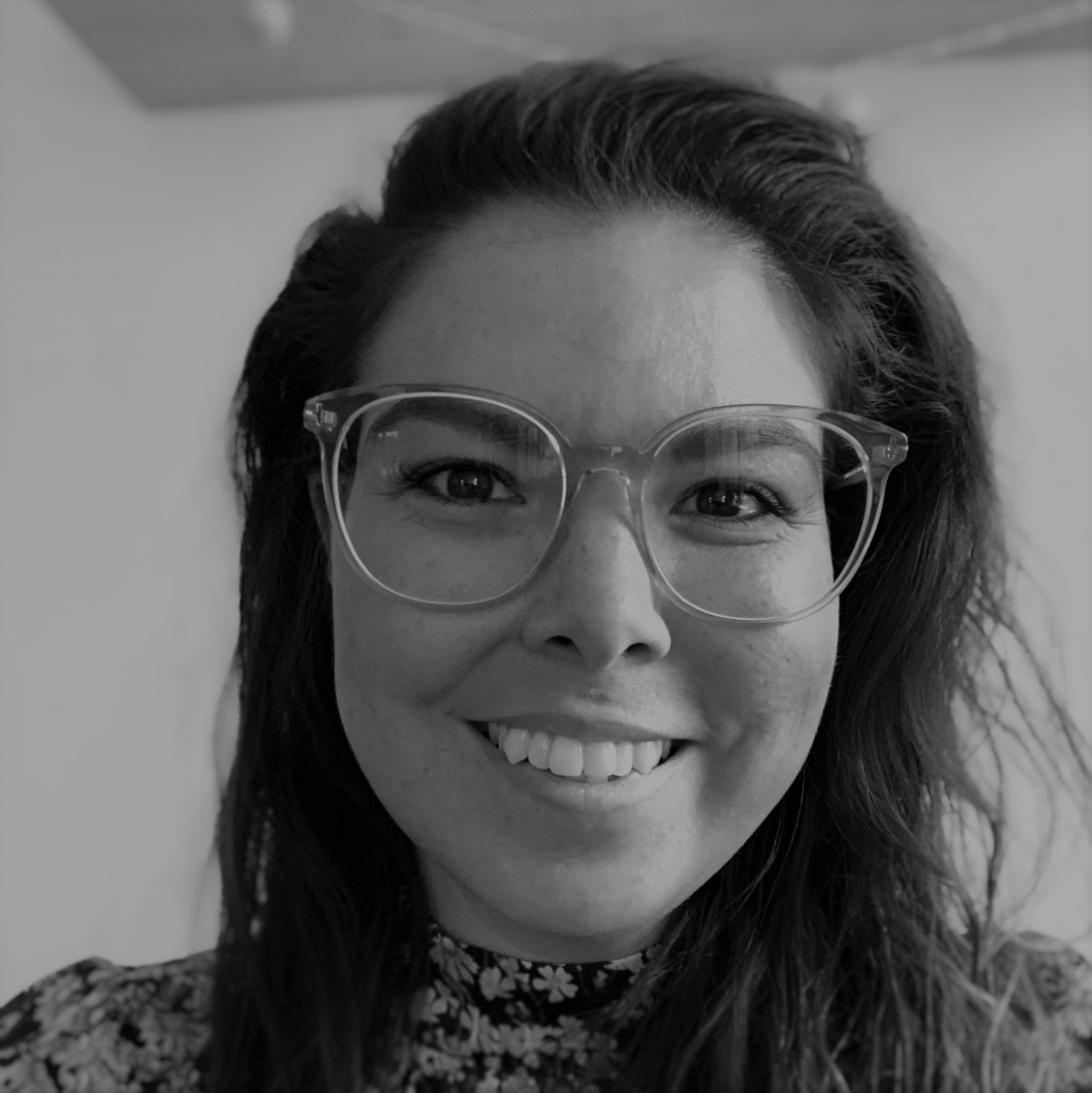
 Architect Nicholas Thomas Lee is a core scholar on the
Architect Nicholas Thomas Lee is a core scholar on the